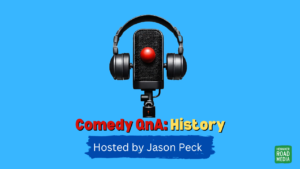I’ve had a bit of a think and this could be a way for the Borden Method for public speaking, as discussed in the former blog of Public Speaking Coach, Eric Feng and Mind Mapping as written about in my previous post could synergise. To start with we have from the Borden method that featured on Eric’s blog:
“Ho-Hum” (B-O-R-I-N-G!)
If you’ve read the earlier article you’ll know that this is what you imagine your audience shouts at you. So, if you’re able to plan your speech in advance, even if it’s a few minutes before, you know that you need a strong opening. Perhaps ask yourself what sort of information can I give my audience that will make them ask themselves “why?”
If they ask themselves why, then they’re engaged in your speech. This becomes the first branch on your Mind Map. As you move onto your first point imagine the audience saying to you:
“why bring that up?”
This means that you will need to find a good solid reason for the point that you have just made. Your point should relate to your overall message. The next part of the method is:
“For instance?”
This statement means that you will need to come up with an example to back up the point that you just made. So far, so straightforward. The final statement is:
“So what?”
This is the part where you conclude and draw out the core message of your speech. Now, the only problem with the Borden method I see is that it doesn’t support the standard Toastmasters structure, which is absolutely fine if you’re having to give a short talk.
But the three-point structure that Toastmasters uses is specific for helping you to create a 5-7 minute speech with three points and supporting information.
The point of this post is to work out a way to synergise the two methods. So for my money it’s simply a question of repeating steps two and three for your second and third points.
The final structure would, therefore, look something like this:
“B-O-R-I-N-G!”
“why bring that up?”
“For instance?”
“why bring that up?”
“For instance?”
“why bring that up?”
“For instance?”
“So what?”
You can see how this works in the Mind Map below:

Please note: once you’ve clicked on the image use your back arrow in your browser to come back to this blog!
In fact you could imagine the audience asking those questions for however many points you want to make in your speech. But for this example I’m just sticking to the classic three-point structure.Although, admittedly, it is now somewhat longer than the original four-point approach, it does provide a clearer method with each point backed up. The Mind Map is useful because it’s a memory technique and helps you remember the structure and it allows you to see how the ideas in your speech inter-connect.
So next time you have a speech that you have to create killer content off the cuff or, ideally, with a bit more planning try to think through the above structure so you can pre-empt your audience’s internal questions.
March 6th 2008 Update!!!
I’ve just come across a review of the Mind Mapping software iMindMap 2.0. I’ve used the trial version of the software, but unfortunately my laptop died in an unrelated incident. So I have to go through the process of getting hold of iMindMap again. Sigh. The software’s from Tony Buzan’s company and allows to create mind maps like you do with traditional pens and paper.
I also saw on Chuck Frey’s MindMapping Software blog that he’d written about 3 benefits of visual mapping in meetings. This can esaily be applied to individuals too. Here’s one of the benefits:“1. It creates a much higher level of engagement among meeting participants. This has to do with the way our minds work, Sibbett explains. When our minds see a work in progress – such as a sketch or a mind map – they want to fill in the missing details”.If you have longer to develop the speech and you plan to use it more than once, you can always add more to it and it can grow over a period of time.



